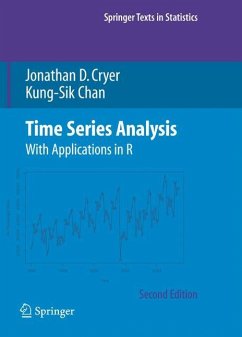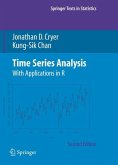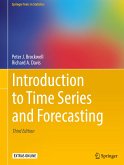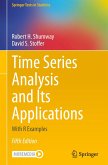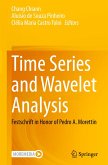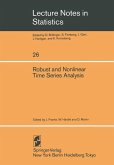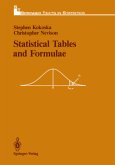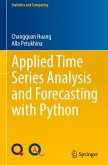Time Series Analysis With Applications in R, Second Edition, presents an accessible approach to understanding time series models and their applications. Although the emphasis is on time domain ARIMA models and their analysis, the new edition devotes two chapters to the frequency domain and three to time series regression models, models for heteroscedasticity, and threshold models. All of the ideas and methods are illustrated with both real and simulated data sets.
A unique feature of this edition is its integration with the R computing environment. The tables and graphical displays are accompanied by the R commands used to produce them. An extensive R package, TSA, which contains many new or revised R functions and all of the data used in the book, accompanies the written text. Script files of R commands for each chapter are available for download. There is also an extensive appendix in the book that leads the reader through the use of R commands and the new R package to carryout the analyses.
Hinweis: Dieser Artikel kann nur an eine deutsche Lieferadresse ausgeliefert werden.
A unique feature of this edition is its integration with the R computing environment. The tables and graphical displays are accompanied by the R commands used to produce them. An extensive R package, TSA, which contains many new or revised R functions and all of the data used in the book, accompanies the written text. Script files of R commands for each chapter are available for download. There is also an extensive appendix in the book that leads the reader through the use of R commands and the new R package to carryout the analyses.
Hinweis: Dieser Artikel kann nur an eine deutsche Lieferadresse ausgeliefert werden.
From the reviews of the second edition.
"The book is ideal for undergradute and honours time series modules, . . . .written and structured in such a way that students are introduced to the various concepts and methodologies at a graduate level. . . . more advanced mathematical details are provided in appendices at the end of the chapters. . . .Cryer and new co-author, Kung-Sik Chan, have compiled a comprehensive resource on time series analysis, integrating traditional time series methodologies with newer techniques and procedures. . . . The first ten chapters deal with time-domain analysis of univariate time series. . . . Deterministic trend models. . . . Autoregressive moving average (ARMA) models. . . . The classic model building approach of Box and Jenkins. . . . including multiclative models. . . . The second part of the book consists of new chapters on more advanced topics. Time series regression models. . . . Models of heteroscedasticity. . . . Frequency-domain analysis. . . . The book concludes with nonlinear time series. . . . The fact that R and the TSA package are freely available . . . contibutes to the accessibility of the book. . . . I would highly recommend this book." (Paul J. van Staden, South African Statistical Association)
"Intended to serve as an introductory course text in time series analysis, this edition is appropriate for a target audience of upper-division undergraduates and beginning graduate students. ...The second edition has undergone substantial revision; the most notable changes are the inclusion of new material and the switch from Minitab to the R programming language (R Development Core Team 2008). In fact, the text makes extensive use of the contributed R package TSA, maintained by one of the authors (KSC), providing sample code throughout. It also boasts an appendix containing an introduction to R along with several of the commands use in each chapter. Since many practical problems in time series analysis are solvedusing statistical software, the change to R will likely be appreciated by students. ...This text is well written and provides thorough coverage of univariate ARIMA modeling. In fact, I will strongly consider adopting this text for my next introductory time series class at the advanced undergraduate/beginning graduate level." ( Journal of the American Statistical Association, Dec. 2009, Vol. 104, No. 488)
"Based on the book on Time Series Analysis by Jonathan Cryer, published in 1968, the new edition, co-authored with K.-S. Chan, contains nearly all of the well-received original in addition to considerable up-to-date new material, numerous new datasets, and new exercises. Hence the book emphasizes the time domain approach and particularly the Box-Jenkins approach. In addition, some of the new topics that are integrated with the original include unit root tests, extended autocorrelation functions, subset ARIMA models, and bootstrapping. Furthermore, the new edition covers completelynew chapters on time series regression models, time series models of heteroscedasticity, spectral analysis, and threshold models. Although the level of difficulty in these new chapters is somewhat higher than in the more basic material, the discussion is presented in a way that will make the material accessible and quite useful to a broad audience of users. ... The book is suitable for a one-semester course attended by students in statistics, economics, business, engineering, and quantitative social sciences. Basic applied statistics through multiple linear regression is assumed. Calculus is assumed only to the extent of minimizing sums of squares, but a calculus-based introduction to statistics is necessary for a thorough understanding of some of the theory. The required facts concerning expectation, variance, covariance, correlation, and properties of conditional expectation and minimum mean square error prediction are presented in appendices. ... In conclusion, this book is easy to access. It makes the difficult contexts very concrete. Wonderful work and strongly recommended for a graduate course or for self-study." (Technometrics. August 1, 2010, 52(3), p. 365)
"This second edition...includes new material on time series regression models, spectral analysis, threshold models, and models of heteroscedasticity; the latter of which are heavily used in econometrics and have traditionally been left out of books on time series. The new chapters on heteroscedasticity and threshold models, in my opinion, are what set this book apart from others. ... Overall, the book is well laid out and well written. The TSA package easily loaded on my Mac and the software and example code ran without any problems. ...I have no reservations recommending it as the text for an applied course, which is the intended use of the book." ( Biometrics 65, March 2009)
"The book is ideal for undergradute and honours time series modules, . . . .written and structured in such a way that students are introduced to the various concepts and methodologies at a graduate level. . . . more advanced mathematical details are provided in appendices at the end of the chapters. . . .Cryer and new co-author, Kung-Sik Chan, have compiled a comprehensive resource on time series analysis, integrating traditional time series methodologies with newer techniques and procedures. . . . The first ten chapters deal with time-domain analysis of univariate time series. . . . Deterministic trend models. . . . Autoregressive moving average (ARMA) models. . . . The classic model building approach of Box and Jenkins. . . . including multiclative models. . . . The second part of the book consists of new chapters on more advanced topics. Time series regression models. . . . Models of heteroscedasticity. . . . Frequency-domain analysis. . . . The book concludes with nonlinear time series. . . . The fact that R and the TSA package are freely available . . . contibutes to the accessibility of the book. . . . I would highly recommend this book." (Paul J. van Staden, South African Statistical Association)
"Intended to serve as an introductory course text in time series analysis, this edition is appropriate for a target audience of upper-division undergraduates and beginning graduate students. ...The second edition has undergone substantial revision; the most notable changes are the inclusion of new material and the switch from Minitab to the R programming language (R Development Core Team 2008). In fact, the text makes extensive use of the contributed R package TSA, maintained by one of the authors (KSC), providing sample code throughout. It also boasts an appendix containing an introduction to R along with several of the commands use in each chapter. Since many practical problems in time series analysis are solvedusing statistical software, the change to R will likely be appreciated by students. ...This text is well written and provides thorough coverage of univariate ARIMA modeling. In fact, I will strongly consider adopting this text for my next introductory time series class at the advanced undergraduate/beginning graduate level." ( Journal of the American Statistical Association, Dec. 2009, Vol. 104, No. 488)
"Based on the book on Time Series Analysis by Jonathan Cryer, published in 1968, the new edition, co-authored with K.-S. Chan, contains nearly all of the well-received original in addition to considerable up-to-date new material, numerous new datasets, and new exercises. Hence the book emphasizes the time domain approach and particularly the Box-Jenkins approach. In addition, some of the new topics that are integrated with the original include unit root tests, extended autocorrelation functions, subset ARIMA models, and bootstrapping. Furthermore, the new edition covers completelynew chapters on time series regression models, time series models of heteroscedasticity, spectral analysis, and threshold models. Although the level of difficulty in these new chapters is somewhat higher than in the more basic material, the discussion is presented in a way that will make the material accessible and quite useful to a broad audience of users. ... The book is suitable for a one-semester course attended by students in statistics, economics, business, engineering, and quantitative social sciences. Basic applied statistics through multiple linear regression is assumed. Calculus is assumed only to the extent of minimizing sums of squares, but a calculus-based introduction to statistics is necessary for a thorough understanding of some of the theory. The required facts concerning expectation, variance, covariance, correlation, and properties of conditional expectation and minimum mean square error prediction are presented in appendices. ... In conclusion, this book is easy to access. It makes the difficult contexts very concrete. Wonderful work and strongly recommended for a graduate course or for self-study." (Technometrics. August 1, 2010, 52(3), p. 365)
"This second edition...includes new material on time series regression models, spectral analysis, threshold models, and models of heteroscedasticity; the latter of which are heavily used in econometrics and have traditionally been left out of books on time series. The new chapters on heteroscedasticity and threshold models, in my opinion, are what set this book apart from others. ... Overall, the book is well laid out and well written. The TSA package easily loaded on my Mac and the software and example code ran without any problems. ...I have no reservations recommending it as the text for an applied course, which is the intended use of the book." ( Biometrics 65, March 2009)

